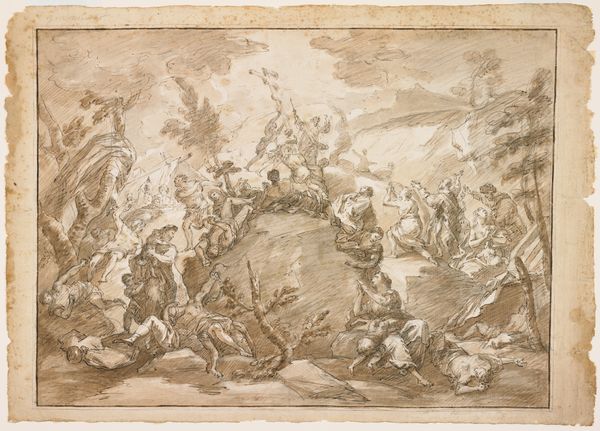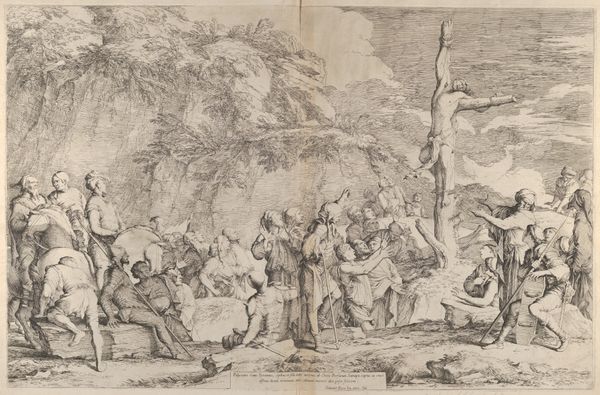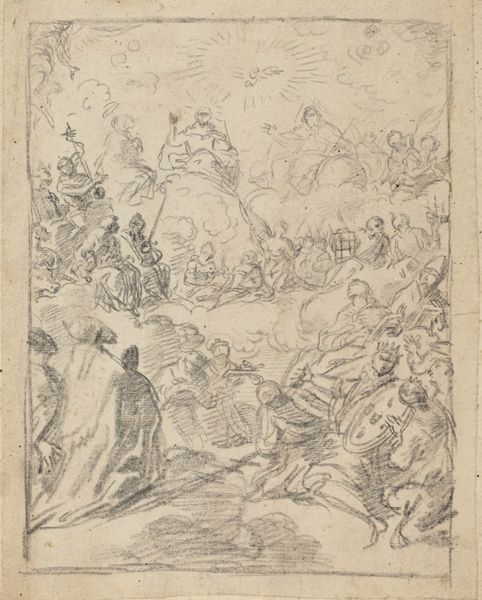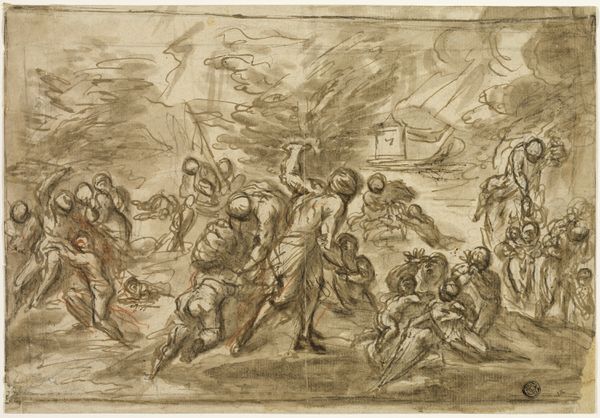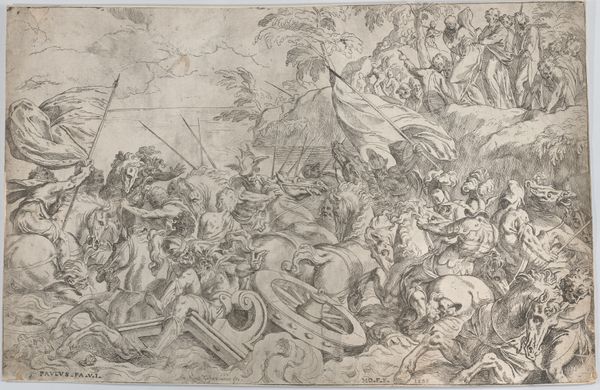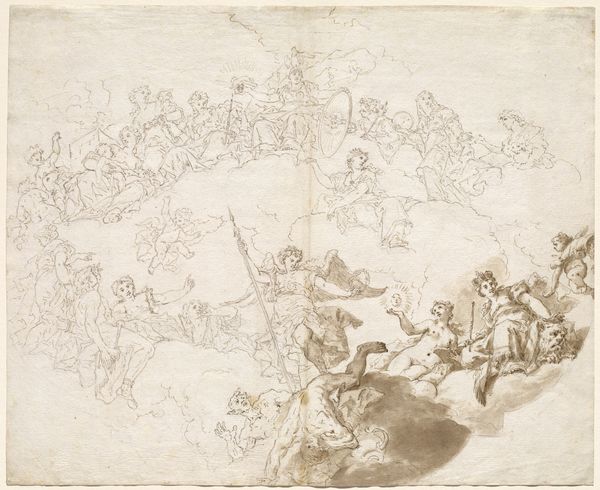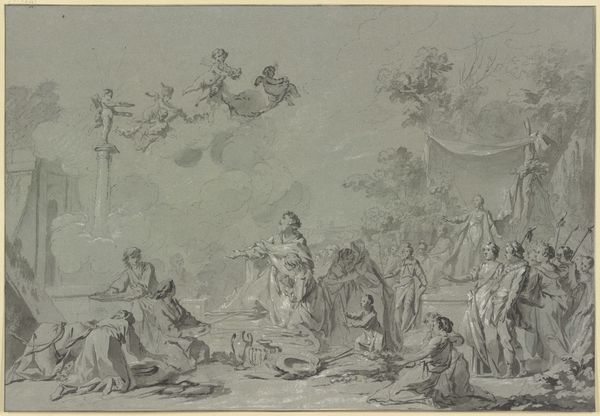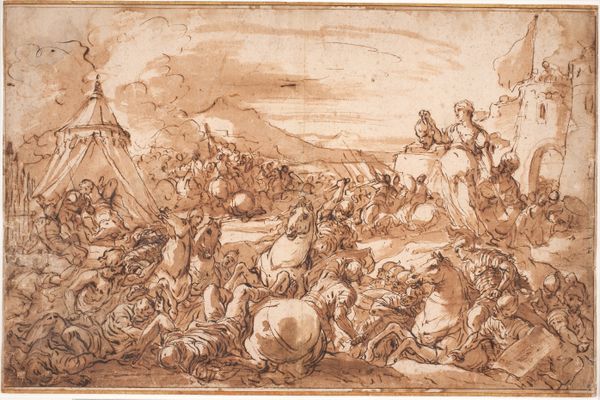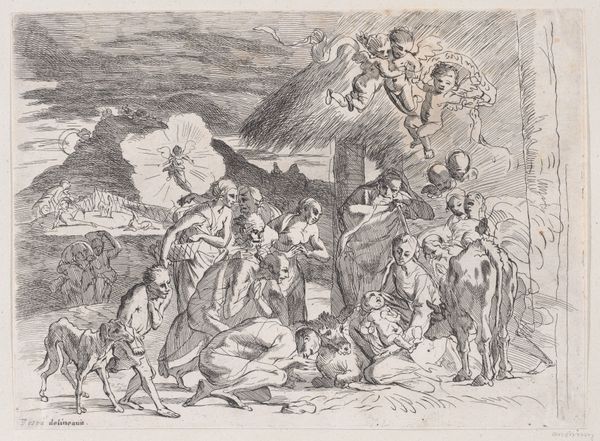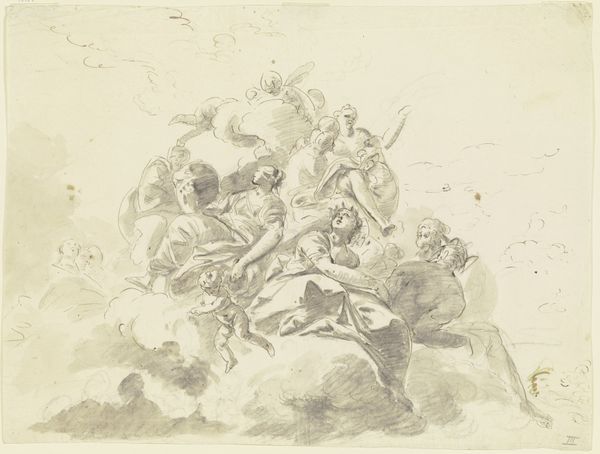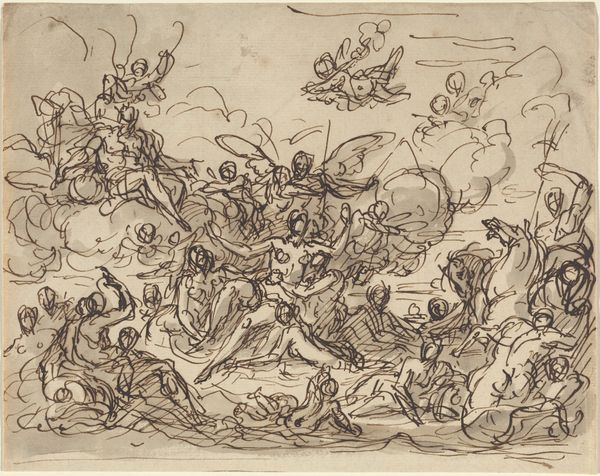
drawing, print, ink
#
drawing
#
byzantine-art
#
allegory
# print
#
classical-realism
#
female-nude
#
ink
#
history-painting
#
nude
#
male-nude
#
angel
Dimensions: 12 11/16 x 15 3/4 in. (32.3 x 40 cm)
Copyright: Public Domain
Curator: Look at this drawing, "The Last Judgment," made between 1615 and 1620. It’s ink on paper. Quite striking, wouldn't you say? Editor: It's chaotic! An absolute storm of bodies. My immediate feeling is anxiety, a claustrophobic dread. So many figures reaching, struggling... what am I looking at here? Curator: You’re seeing a classical representation of the Day of Judgment, that moment where souls are judged, destined for heaven or hell. What’s compelling is that while the piece evokes the weight of dogma and tradition, there’s a raw, kinetic energy coursing through the drawing that’s impossible to ignore. The figures seem caught mid-shriek! Editor: Right, but how does that play out politically and socially? These figures...who do they represent? Are there hierarchies beyond just the damned and the saved? I mean, it's interesting to note how physical this judgment is. There's this inherent tension because judgment, inherently metaphysical, is happening within this incredibly material world, right? Curator: A beautiful interpretation. For me, the interesting touch is the scale. It manages to make the infinite, or at least our fear of it, so incredibly finite. It’s interesting how a "simple" ink wash manages to capture a cosmos. You sense this vastness even while you observe very defined contours of muscular figures. You see male and female nudes scattered all over the composition. The angels above are carrying swords, leading figures on the clouds that seem to be floating up. In some parts there seems to be hellfire, in other parts the possibility of salvation. Editor: Absolutely, the artistic style blends with Byzantine influences! It’s this mashup of styles that highlights the anxieties around legacy, redemption, body politics, salvation, but who dictates these anxieties? Whose worldview is being depicted, right? Curator: Yes! It becomes a cultural document too. It reveals how a past culture perceives mortality. Perhaps we see not just fear but the hope for transcendence, for grace. And, on the most fundamental level, just how inescapable judgement always is, and whether such is indeed "just." Editor: Right. It’s less about some abstract divine plan and more about power structures made visible. Ultimately, the image reminds us that representation is never neutral. Even judgment is mediated through someone's eyes, biases, or agendas. Curator: Well said! That definitely gives me more to ponder...a whirlwind of revelation and observation.
Comments
No comments
Be the first to comment and join the conversation on the ultimate creative platform.
